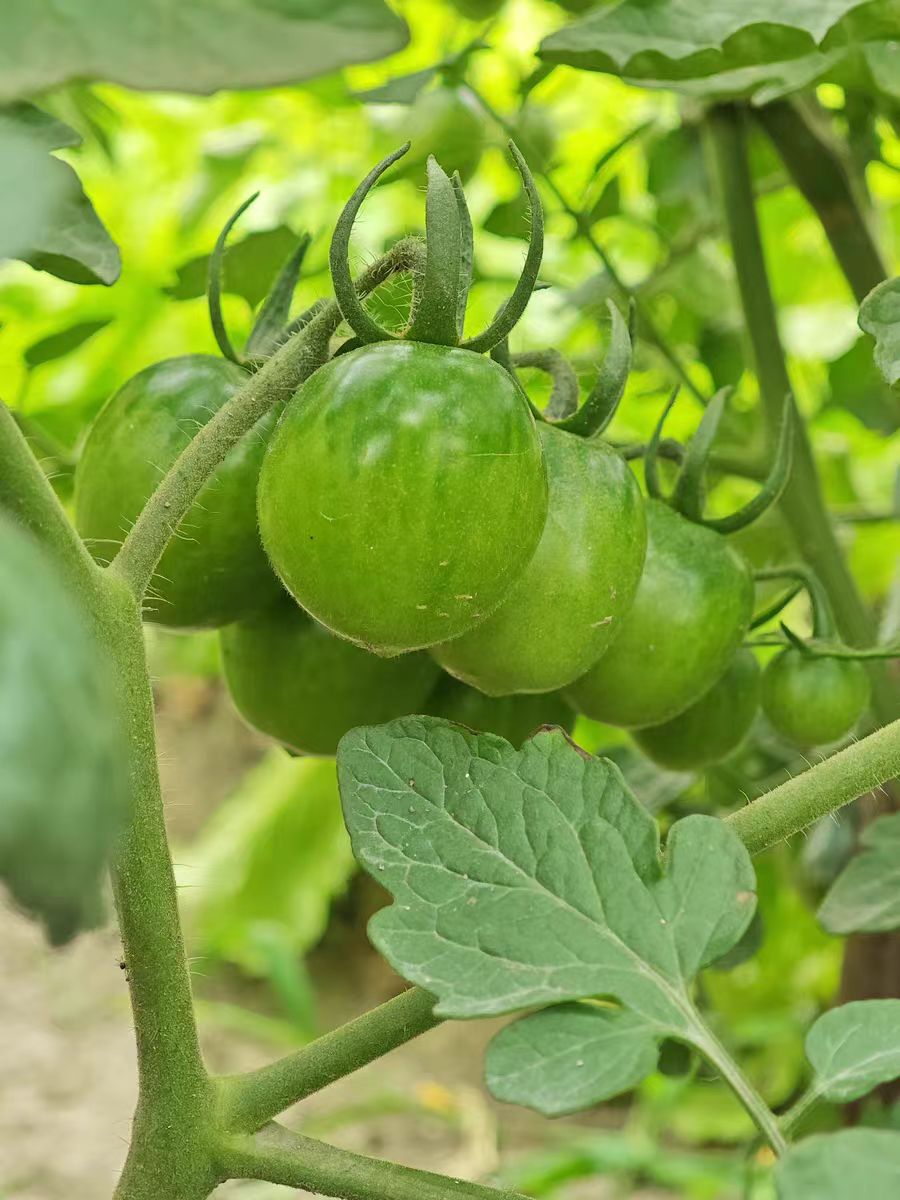People who see Huangfei cherry tomatoes for the first time are always attracted by their unique bright yellow fruits. Most cherry tomatoes we commonly see are red, but this yellow variety with an "artistic vibe" was actually bred by Japanese breeding experts. As a hybrid, it has an impressive feature: it can keep flowering and fruiting continuously as long as the temperature stays between 15-30°C, producing multiple crops from spring to autumn like a "tomato-producing machine."
Each of these cherry tomatoes weighs about 18 grams, roughly the size of a pigeon egg. When ripe, they gradually turn from green to a beautiful golden yellow. Despite their thin skin, they rarely crack. Biting into one releases a burst of juice, with a sweetness level of 8-10 degrees—sweet with a subtle tang and a faint honey-like aroma. They’re perfect for eating fresh as fruit, adding to salads, or decorating plates. As a mid-early maturing variety, it takes about 70 days from sowing to harvest. However, since the stems grow rapidly, timely pruning is needed to remove unnecessary side shoots, ensuring nutrients are concentrated on the fruits.
Many who have grown them on balconies say Huangfei cherry tomatoes are like "Japanese-style fresh beauties"—not only visually appealing but also hardy and adaptable to different environments. They’re ideal for ordinary households to plant a few pots on balconies or windowsills, serving both as ornamental plants and sources of delicious fruit.
Now, let’s move on to the key topic of pollination. First, it’s important to know that Huangfei cherry tomatoes are self-pollinating plants, theoretically able to complete pollination on their own. However, whether manual assistance is needed depends on the growing environment.
If planted on an open terrace or an unenclosed balcony, pollination usually requires little intervention. Each flower has a unique structure: the stamens form a cylindrical shape surrounding the pistil in the center. When the wind blows or small insects like bees visit, the stamens vibrate, releasing pollen and naturally completing pollination. Observant gardeners may notice fine pollen grains on the petals in the morning before the dew dries—signs of natural pollination.
However, if your balcony is enclosed with screens or the plants are grown in a greenhouse, where there’s less wind and fewer insects, manual intervention becomes necessary to avoid low fruit set. Here are some practical methods:
If you have many plants, invest about $3 (20 RMB) in an electric pollinator. Every morning between 9-10 AM, when the flowers are in full bloom, gently touch the base of the flowers with the brush head to mimic insect vibrations and help pollen disperse.
For just a few pots, and if you’re patient, use a soft-bristled brush to collect pollen from the stamens and gently apply it to the pistil stigma. Though time-consuming, this method works well for those who enjoy meticulous gardening.
From laboratories to ordinary balconies, Huangfei cherry tomatoes prove with their sweetness and beauty that even seemingly premium varieties can become part of daily life. Whether you prefer "laid-back gardening" and the surprises of natural pollination or enjoy the hands-on fun of artificial pollination, these golden fruits bring the joy of harvest. If you want to plant a touch of gold on your windowsill or balcony, don’t wait—start today!
Where does the Huangfei cherry tomato variety originate from?

Share with
Tagged in :




Leave a Reply